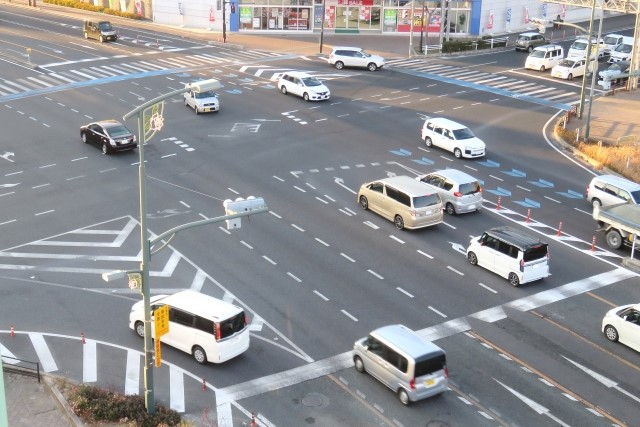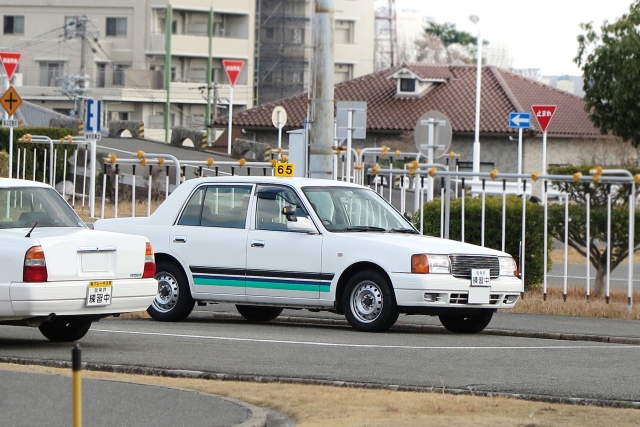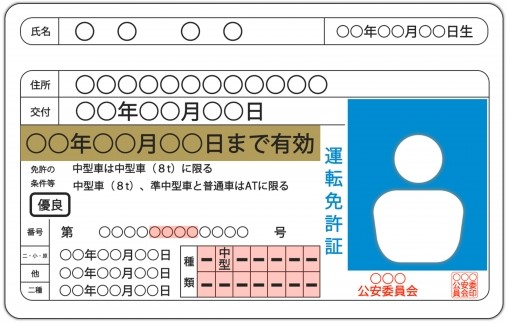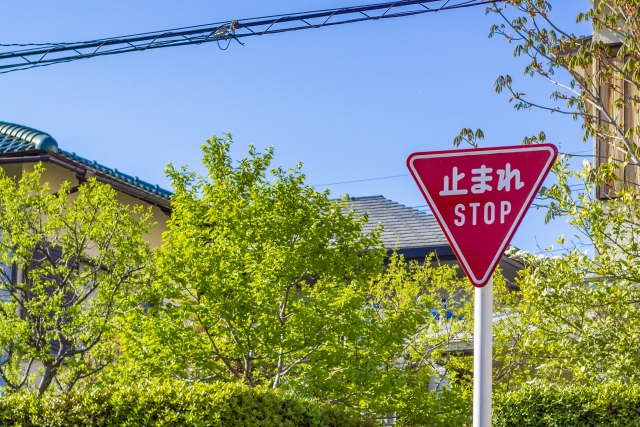“I want to drive in Japan, but the procedures seem complicated…” “Due to the language barrier, I don’t know where to get information…” To everyone facing such concerns, this article aims to be a reliable guidebook to help you smoothly start your car life in Japan.
In this article, we will thoroughly explain the specific steps for getting behind the wheel in Japan, from how to utilize an **International Driving Permit (IDP)**, to **converting your foreign driver’s license (Gaimen Kirikae)**, and even obtaining a Gold License, including real voices from those who have experienced the process.
Now, let’s gain the freedom to move around Japan and encounter wonderful scenery!

Before Getting Behind the Wheel in Japan! 3 Ways to Drive Legally
There are mainly three ways for foreigners to drive in Japan. The best option for you will depend on your length of stay, purpose, and your home country’s license status.
1. 【For Short Stays】Drive in Japan with an International Driving Permit (IDP)
- Overview: You can drive in Japan by carrying your **International Driving Permit (IDP)** issued in your country, your **valid domestic driver’s license**, and your **passport**. This is limited to IDPs issued based on the Geneva Convention.
- Recommended for: Those who want to drive for sightseeing or short business trips to Japan (stays less than 1 year).
- Pros: Relatively easy to obtain and no need to acquire a separate Japanese license.
- Cons: Valid for 1 year from the date of entry into Japan, or the expiration date of the IDP, whichever is shorter. Always carry your domestic license with you.
2. 【Conditional】Can You Drive with Just a Translation of Your Foreign License? (Limited Cases)
- Overview: If you have a driver’s license from Switzerland, Germany, France, Belgium, Monaco, or Taiwan, you can drive by obtaining a Japanese translation of your license from JAF (Japan Automobile Federation) or the respective country’s embassy/consulate, and carrying it along with your original license.
- Recommended for: Those who have a license from the eligible countries listed above and have not obtained an IDP.
- Cons: Driving is permitted for up to 1 year from the date of entry into Japan. If you plan a long-term stay, consider converting to a Japanese license.
3. 【For Long Stays】Acquiring a Japanese Driver’s License through “Gaimen Kirikae” (License Conversion)
- Overview: This is a system for individuals holding a valid foreign driver’s license to convert it to a Japanese driver’s license.
- Recommended for: Those planning to stay in Japan for more than 1 year, or those who want an official license that can also be used as identification in Japan.
- Pros: You can continue driving in Japan by renewing the license. You may also receive benefits like insurance discounts if you obtain a Gold License.
- Cons: The procedure can sometimes be time-consuming and require effort. Depending on your country, written and practical exams may be required.
Now, let’s delve deeper into the “International Driving Permit (IDP)” and “Converting to a Japanese Driver’s License (Gaimen Kirikae),” which are of particular interest to many!
Perfect Guide to Utilizing Your International Driving Permit (IDP)
❌ “What is an IDP? The procedure seems troublesome, and I’m worried because I don’t know the Japanese rules…”
✅ “Think of it as a ‘magic translation card’ that makes your country’s license valid in Japan! With just one card, you can freely explore Japan’s beautiful roads. Understanding traffic rules is manageable if you grasp the key points!”
The International Driving Permit (IDP) is the most convenient way to drive for short-term visitors.
How to Obtain, How to Use in Japan, and Points to Note
- How to Obtain: Apply for it before your departure at the authority that issued your driver’s license in your country (such as AAA or CAA) or a police station. Please note that you cannot obtain it within Japan.
- How to Use in Japan:
- Always carry the IDP, your valid domestic driver’s license, and your passport together.
- Present these documents when renting a car or at checkpoints.
- Validity: The validity period is 1 year from the date of entry into Japan, or the expiration date of the IDP itself, whichever is shorter.
- Obligation to Carry: It is mandatory to carry it with you while driving. Failing to do so may result in penalties.
【Important】Right-Hand Drive & Left-Side Traffic! Tips for Not Getting Confused on Japanese Roads
What often confuses people at first is that Japan has left-side traffic and right-hand drive (except for some countries like the UK, Australia, New Zealand, etc.).
If you are used to right-side traffic (like in North America), be mindful of the following points:
- Turning at Intersections: Turning left is a tight turn, while turning right is a wide turn. Be extremely careful not to enter the oncoming lane.
- Lane Changes and Overtaking: The right lane is for overtaking.
- Wipers and Turn Signals: In Japanese cars, the turn signal lever is generally on the right side, and the wiper lever is on the left side. It’s easy to mix them up until you get used to it, so operate them consciously. Many who came before you have experienced the moment of “trying to signal, but the wipers started flapping…”.
- Practice with a Rental Car: It’s recommended to practice in a less traffic-heavy area before embarking on a full-fledged drive.

Get Your Japanese Driver’s License! Complete Guide to “Gaimen Kirikae” (License Conversion)
If you plan to live in Japan for a longer period, converting to a Japanese driver’s license (“Gaimen Kirikae”) is definitely recommended. It can also be used as identification, and renewals can be done smoothly within Japan.
STEP0: Are You Exempt from Exams? Check the List of Eligible Countries – The Fork in the Road!
The process for Gaimen Kirikae varies greatly depending on whether your country’s license is from an “exam-exempt country/region”.
List of Major Exam-Exempt Countries (Subject to Latest Information)
Includes Iceland, Ireland, UK, Italy, Austria, Australia, Netherlands, Canada, South Korea, Greece, Switzerland, Sweden, Spain, Slovenia, Czech Republic, Denmark, Germany, New Zealand, Norway, Finland, France, Belgium, Portugal, Monaco, Luxembourg, Taiwan, etc.
(*This is a general list and may change. Always check the latest information on the websites of the National Police Agency or your embassy/consulate beforehand.)
【Attention US Residents!】What are the Special Provisions for Maryland and Washington State?
Licenses from the United States generally require exams, but exceptionally, licenses issued in Maryland and Washington State (*Need to confirm if it’s Washington D.C. or the state for the latest information) may be exempt from exams. Always check the latest conditions for these as well.
STEP1: 【For Exam-Exempt Countries】Smooth License Conversion Process in as Little as 1 Day!
If you have a license from an exam-exempt country/region, you can obtain a Japanese license through a relatively simple procedure.
(1) Get a Japanese Translation of Your License at JAF: Like a Certified Translator!
First, you need to get a “Japanese translation” of your foreign driver’s license issued at a JAF (Japan Automobile Federation) branch office. This is an official document that certifies in Japanese what kind of license you have and what vehicles you are authorized to drive.
It’s like having a dedicated “certified translator” for your license. This one document is the key to proceeding smoothly with the process.
- What to Bring: Valid foreign driver’s license, application fee (around 3,000 – 4,000 JPY *Please check with JAF for the latest fee). Application by mail may also be possible.
(2) Application at the Driver’s License Center
Once you have the translation, it’s time to go to the Driver’s License Center (Driving License Examination Center) that has jurisdiction over your address.
(3) Pass the Vision/Color Test, Safety Lecture Video, and Finally Meet Your Japanese License!
After the document screening, there will be a vision test and a color discrimination test. They will check if you meet the vision standards required for obtaining a Japanese license and if you can correctly identify traffic light colors (red, blue, yellow).
After that, you will attend a simple video lecture on Japanese traffic rules (approximately 30 minutes to 1 hour), pay the fee, and finally, your Japanese driver’s license will be issued!
- Success Story:
“Sophia from Australia (28) decided to try Gaimen Kirikae when she got a job in Japan. She obtained the translation from JAF beforehand and went to the Driver’s License Center. Thanks to having all her documents perfectly prepared, the process from application to vision test and video lecture went very smoothly, and she got her shiny new Japanese driver’s license in just about 3 and a half hours! She said with a smile, ‘The procedure was much smoother than I expected! Checking the required documents carefully beforehand really helped. Now I can go for a drive with my friends on the weekend!'”
For this entire process, if things go smoothly, it often can be completed in half a day to a full day.

【Gaimen Kirikae Steps for Exam-Exempt Countries】
① Possess Foreign Driver’s License
② Obtain Japanese Translation of Foreign Driver’s License at JAF, etc.
③ Apply at Driver’s License Examination Center (Submit Required Documents)
④ Aptitude Test (Vision Test, etc.)
⑤ Attend Lecture (Traffic Rules, etc.)
⑥ Driver’s License Issuance
【Gaimen Kirikae Steps for Countries Requiring Exams】
① Possess Foreign Driver’s License
② Obtain Japanese Translation of Foreign Driver’s License at JAF, etc.
③ Apply at Driver’s License Examination Center (Submit Required Documents)
④ Aptitude Test (Vision Test, etc.)
⑤ Written Test (Knowledge Confirmation)
⑥ Practical Test (Skill Confirmation)
⑦ Attend Lecture (Traffic Rules, etc.)
※To be taken after passing the tests |
⑧ Driver’s License Issuance
STEP2: 【For Countries Requiring Exams】The Challenge for Success! Overcome the Walls of Knowledge and Skill
If you have a license from a country not exempt from exams, you need to pass a knowledge test (written exam) and a practical test (driving test). This is the crucial stage, but the path will open up if you prepare thoroughly!

(1) Document Preparation and Application: The First Hurdle, Clear it Without Omissions
First, similar to those from exam-exempt countries, obtain a Japanese translation of your license from JAF and submit your application documents at the Driver’s License Center. At this time, you need to prove the following points:
- You hold a valid foreign driver’s license.
- You have resided in the country where the license was issued for a **total of 3 months or more** after obtaining the license (proven with your passport, etc.).
- You have a valid resident status in Japan.
- You are 18 years of age or older.
(2) Knowledge Test (Written Exam): Easy because it’s in English? The 70% correct barrier! But it’s okay, you can study efficiently with English study materials.
The knowledge test asks basic questions about Japanese traffic rules. In most cases, it consists of 10 true/false questions, and you need to answer 7 or more correctly to pass. It’s often available in multiple languages including English, Chinese, and Spanish, and English textbooks (like “Rules of the Road”) are available at places like JAF.
“It’s only 10 questions, and it’s in English, so it’s a breeze, right?” you might think. However, Japanese traffic rules have their own nuances and priorities, so you should not let your guard down. In fact, many people struggle with this knowledge test.
But don’t worry! Many seniors have passed the test on the first try if they thoroughly understand the important points (such as the meaning of stop signs and rules at railroad crossings) using official English study materials. According to those who passed, they were able to pass on the first try by intensively studying the study materials for two days and solving the practice questions.
(3) Practical Test (Driving Test): The Truth and Breakthrough Methods for the rumored “Super Difficult Hurdle”
If you pass the knowledge test, the next step is to book the practical test. This is sometimes said to be the biggest challenge in Gaimen Kirikae.
❌”The Japanese driving test is too strict! Are they trying to fail foreigners?”
✅”Japan boasts one of the world’s highest levels of traffic safety. To maintain this safety, the test requires extremely careful safety checks and precise driving operations. It’s not a test ‘designed to fail’ but a test to assess the ‘spirit of yielding’ and ‘sense of responsibility’ needed to drive safely on Japanese roads. If you clear that standard, you are also a member of the Japanese driver community!”
The practical test is conducted on a course within the Driver’s License Center. You can check the course map beforehand, and in some cases, you can actually walk the course to observe it.
Instructions are basically given in Japanese, so if you are not confident in Japanese, check in advance if an interpreter is allowed to accompany you (accompaniment may not be permitted in some cases).
Japanese examiners are thoroughly watching to see if you can “drive safely”. S-curves, crank turns, parallel parking or switching direction, checking behind with mirrors, visual checks to the left and right, timing of turn signals. If you neglect even one thing, it could lead to immediate deductions or even the test being stopped. Even for Japanese people, it is said that “many people fail” the first test, but this is a reflection of Japan’s high safety standards.
If you fail, you will need to book another appointment and try again. A test fee is charged each time (around 2,500 – 3,500 JPY *Please check for the latest fees). It’s not uncommon for people to try multiple times before passing, but this also increases the cost, so try to prepare seriously and aim to pass on your first attempt if possible.
(4) Procedures After Passing: Becoming a Japanese Driver at Last!
If you successfully pass the practical test, you will proceed with the same procedures as those from exam-exempt countries (vision test, color test, video lecture, etc.), and then your Japanese driver’s license will be issued. The sense of accomplishment at this point will be extraordinary!

Japanese Driver’s License: From Green to Aim for Gold! Differences in Color and Meaning
On Japanese driver’s licenses, there are three colors for the band indicating the expiration date.
Proof of a Beginner “Green License”: Start Safe Driving with the Wakaba Mark
- When you first obtain a Japanese license, you will be issued a license with a green band.
- The validity period is until your 2nd or 3rd birthday after acquisition (usually about 2 years).
- During this period, it is mandatory to display a “Beginner Driver Mark (Wakaba Mark)” on the front and back of your car while driving.
General Driver “Blue License”: This is Where it Gets Real
- After the Green License period ends and you complete your first renewal, your license band will turn blue.
- The validity period is usually 3 or 5 years (depending on traffic violation history, etc.).
- This is where your career as a full-fledged Japanese driver begins.
The Shine of Excellence “Gold License”: Requirements for Obtaining and Enviable Benefits (Including Insurance Discounts?)
- A license with a gold band is issued to excellent drivers who have met conditions such as being accident-free and violation-free for the past 5 years.
- Main Requirements for Obtaining:
- Have held a license continuously for 5 years or more.
- Have had no traffic violations or personal injury accidents in the past 5 years from 41 days before your birthday.
- Benefits:
- Longer License Validity: Generally 5 years.
- Shorter Lecture Time During Renewal: Only requires an excellent driver lecture (approx. 30 minutes).
- Lower Renewal Fee: A few hundred yen cheaper than for general drivers.
- Car Insurance Discount: Many insurance companies offer a Gold License discount, which may lower your insurance premium! (*Discount rates vary depending on the insurance company and contract details)
- It serves as proof of your high awareness of safe driving and can lead to social credibility.
A Gold License is the aspiration of many Japanese drivers. Aim for a Gold License by always practicing safe driving!

【Learn from Experiences】Insights from Real License Stories
Here, let’s look at a few useful points from the experiences of people who have actually gone through the procedures related to driver’s licenses in Japan.
Lesson 1: If you’re exam-exempt, the process is speedy! But prepare your documents carefully.
We often hear stories from people with licenses from exam-exempt countries like Canada who underwent Gaimen Kirikae. They found the process from JAF translation, application at the Driver’s License Center, vision test, and video lecture went very smoothly, and they obtained their Japanese license in a shorter time than expected. However, this is only the case if the required documents were perfectly prepared beforehand. For any procedure, thorough preparation beforehand is the key to success.
Lesson 2: Replacing a lost license takes time and money! Handle it with care.
If your driver’s license is lost or significantly damaged, you will need to get it reissued. This reissue procedure can cost several thousand yen and take several hours. Don’t think “it’s just a photo,” and always handle your driver’s license carefully.
Lesson 3: Where to get an International Driving Permit (IDP)? Prior confirmation is crucial!
An International Driving Permit is like a “translation certificate” that internationally certifies that you hold a valid driver’s license issued in your country and specifies the types of vehicles you are authorized to drive. It is intended to allow Japanese traffic authorities to quickly verify your driving qualifications. An International Driving Permit valid in Japan is limited to those issued based on the **Geneva Convention (1949)** by a **正規の機関 (official institution – like the public safety commission or equivalent, or an organization entrusted by them) of a Geneva Convention signatory country/region**. Therefore, for foreigners to drive in Japan, you must **obtain the International Driving Permit (IDP) in advance from the institution that issued your driver’s license** before departing from your home country.
Driving in Japan Q&A: Get Your Questions Clearly Answered!
Finally, we will answer questions that foreign drivers often have.
Q1. What is the total cost for Gaimen Kirikae?
- For Exam-Exempt Countries:
- JAF Translation Fee: Approx. 3,000 – 4,000 JPY
- License Application & Issuance Fee: Approx. 4,000 – 5,000 JPY
- Total: Approx. 7,000 – 9,000 JPY is a rough estimate.
- For Countries Requiring Exams:
- In addition to the fees above, there is a knowledge test fee (approx. 1,500 JPY/attempt) and a practical test fee (approx. 2,500 – 3,500 JPY/attempt) which you pay each time until you pass.
- If you pass all tests on your first attempt, the total is about 11,000 – 14,000 JPY. However, if you need to take the practical test multiple times, the cost will increase accordingly.
(※The above are just estimates. Always check with the relevant Driver’s License Center or JAF for the latest accurate fees.)
Q2. Is it okay if I’m not good at Japanese? How much English support is available?
- JAF Translation: There are often staff who can handle English.
- Driver’s License Center:
- Some application forms may have English alongside Japanese.
- The knowledge test is often available in English.
- Instructions for the practical test are generally in Japanese. You need to check in advance if an interpreter is allowed to accompany you.
- Larger license centers in urban areas may have English-speaking staff, but generally, communication will be primarily in Japanese. It’s a good idea to bring a friend or acquaintance who can speak Japanese or use translation apps if necessary.
Q3. What are the key points about Japanese traffic rules that foreigners should be especially careful about? (Pedestrian/Cyclist priority, etc.)
- Absolute adherence to “Tomare” (Stop): At locations with the red inverted triangle “Tomare” sign, you must come to a complete stop before the stop line and thoroughly check for safety to the left and right.
- Stopping before railroad crossings: It’s a habit to always stop before a railroad crossing, open your window, and visually and audibly check for safety from both directions.
- Thorough pedestrian and cyclist priority: At pedestrian crossings, of course, but even in areas without traffic lights, if pedestrians or cyclists are attempting to cross, it is standard practice to yield. Be especially careful of cyclists suddenly appearing on local roads. “Watch out for bikes!” is advice often given by those with experience.
- Checking for blind spots when turning left: When turning left, always check not only your side mirror but also look directly to ensure you don’t run over cyclists or motorcycles coming from behind.
- Yielding in ambiguous situations: The spirit of “O-saki ni dozo” (Please, after you) is ingrained in Japan. Avoid aggressive merging or sudden lane changes, and drive with a mindset of yielding to others.

Summary: Choose the Best Method and Enjoy Safe and Fun Car Life in Japan!
Up to this point, we have explained various methods and procedures for foreigners to drive in Japan.
- For short trips or business travel, obtaining an International Driving Permit (IDP) in your home country before departure is easy and convenient.
- If you plan to stay in Japan for more than 1 year, converting to a Japanese driver’s license (“Gaimen Kirikae”) is recommended. It can serve as identification and offers the enjoyment of aiming for a Gold License!
❌”The procedure is complicated and seems to take time and money, so I’ll give up…”
✅”Certainly, it takes effort, but if you follow the correct steps, you will definitely obtain a Japanese driver’s license! Beyond that awaits free access to places you can’t reach by train or bus, comfortable drives with family and friends, and an improved quality of life in Japan!”
If you are a short-term visitor, invest a few thousand yen to get an IDP and gain the freedom to travel Japan’s beautiful scenery. Speeding through the vast landscapes of Hokkaido in a rental car, or driving along the coastline of Okinawa… Doesn’t that sound exciting? On the other hand, if you are planning a long-term stay of a year or more, we strongly recommend obtaining a Japanese driver’s license.
We hope this article serves as a helpful guide for you to obtain your driver’s license in Japan and contributes to your safe and comfortable car life. For any unclear points or the latest information, please be sure to check with JAF, the relevant Driver’s License Center, or your embassy/consulate.
We look forward to seeing you on the roads of Japan! Drive safely and have a wonderful Japanese driving experience!

